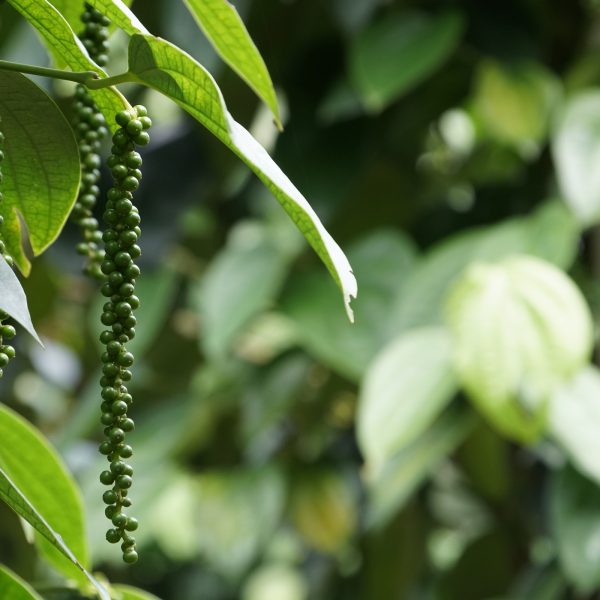-
How does it feel?
Valerian root samples have different organoleptic qualities depending on whether it is fresh or dried and the species used. Taking a tea or extract made with Valeriana officinalis one notices first the strong earthy almost animal odour (sometimes likened to sweaty shoes!) which is often found to excite cats. This carries over to the first taste, soon supplanted by a distinctive low bitterness, an astringent woody quality, a little spicy heat and finally a slightly camphor-like aftertaste.
The complexity of these tastes reflect the action and reputation of the whole remedy.
-
What can I use it for?
Valerian is primarily used to encourage a healthy sleeping pattern. It can be tried in any condition dominated by tension and anxiety. It can relax tense muscles and may be used for tension headaches, intestinal cramps and palpitations associated with tension in the chest and diaphragm.
It is a common treatment for pain associated with menstruation. It is also said that the anxiety and sleeping difficulties due to premenstrual symptoms can be helped.
For some people however the tonic reputation of valerian can translate into a stimulating effect. If you feel anything like this stop the valerian and start it again to be sure.
-
Into the heart of valerian
Valerian presents a fascinating paradox. It is both one of the most established remedies in modern medicine, including as a prescription medicine in Europe, yet its mechanism of action is still unknown.
Today it is generally viewed primarily as a mild sedative, but in antiquity, it had a much more rounded application, including a reputation as a general tonic.
-
Traditional uses
 Valerian root has been used as a sedative in Europe since the 16th Century and was a prescription medicine as such in the 19th and early 20th centuries across much of the world. In the Middle Ages it was valued in the treatment of epilepsy, which may be considered the origin of its further use as an antispasmodic. In the 20th century, valerian became known as a ‘nervine’, implying that it could calm, while also acting as a tonic to nourish and improve the function of the nervous system. Recommended uses included sleeplessness, nervous unrest, stress, and occasionally neuralgia and epilepsy.
Valerian root has been used as a sedative in Europe since the 16th Century and was a prescription medicine as such in the 19th and early 20th centuries across much of the world. In the Middle Ages it was valued in the treatment of epilepsy, which may be considered the origin of its further use as an antispasmodic. In the 20th century, valerian became known as a ‘nervine’, implying that it could calm, while also acting as a tonic to nourish and improve the function of the nervous system. Recommended uses included sleeplessness, nervous unrest, stress, and occasionally neuralgia and epilepsy.Paradoxically, in early Graeco-Roman times the view was that valerian had “warming” or metabolic stimulating features, used as a diuretic, digestive remedy, menstrual stimulant and expectorant, and it was also used directly to cleanse and heal wounds and infections. Other species of valerian have been used similarly in native North American medicine and in Asia. Early European tradition combined valerian’s reputation as a stimulant and tonic with its use in depression and despondency and low unresolved fever conditions.
-
Traditional actions
Herbal actions describe therapeutic changes that occur in the body in response to taking a herb. These actions are used to express how a herb physiologically influences cells, tissues, organs or systems. Clinical observations are traditionally what have defined these actions: an increase in urine output, diuretic; improved wound healing, vulnerary; or a reduction in fever, antipyretic. These descriptors too have become a means to group herbs by their effects on the body — herbs with a nervine action have become the nervines, herbs with a bitter action are the bitters. Recognising herbs as members of these groups provides a preliminary familiarity with their mechanisms from which to then develop an understanding of their affinities and nuance and discern their clinical significance.
-
Traditional energetic actions
Herbal energetics are the descriptions Herbalists have given to plants, mushrooms, lichens, foods, and some minerals based on the direct experience of how they taste, feel, and work in the body. All traditional health systems use these principles to explain how the environment we live in and absorb, impacts our health. Find out more about traditional energetic actions in our article “An introduction to herbal energetics“.
Western energetics
-
What practitioners say
 Although valerian is one of the obvious remedies that one considers in dealing with anxiety symptoms, sleep difficulties and visceral spasm. There may be advantages in seeing it as it was traditionally, as a restorative healing remedy, particularly suited to debility and fatigue, perhaps as an important part of a convalescent regime.
Although valerian is one of the obvious remedies that one considers in dealing with anxiety symptoms, sleep difficulties and visceral spasm. There may be advantages in seeing it as it was traditionally, as a restorative healing remedy, particularly suited to debility and fatigue, perhaps as an important part of a convalescent regime.There have been occasions in which patients have reported stimulation of various forms after taking treatments that included valerian and relief after the valerian was discontinued. The practitioner may find assured-quality skullcap (Scutellaria lateriflora), hops (Humulus lupulus), motherwort (Leonurus cardiaca), and passionflower (Passiflora incarnata) useful substitutes or companions.
Nerves
Indicated for insomnia, panic attacks and lack of concentration. It can also be considered in the treatment of mild depression.
Cardiovascular
Its relaxing qualities may help palpitations, tightness in the chest and high blood pressure.
Digestion
As a warming carminative it is useful for erratic digestion, bloating and constipation. It soothes all spasms in the intestines and prevents the impact of stress on the gut, helping to reduce irritable bowel syndrome as well.
-
Research
 The evidence for the benefits of valerian in sleep is positive though not conclusive. One extensive literature search in 2006 identified 16 eligible studies involving a total of 1093 patients. Most studies had significant design problems, and the doses, preparations, and length of treatment varied considerably. Although the evidence suggested that valerian might improve sleep quality without producing side effects the authors called for future studies with more standardised doses and outcome measures (1). There are similar conclusions in later reviews of the evidence (2,3,4). There is clinical trial evidence of benefits in other sleep-related disorders such as restless leg syndrome (5).
The evidence for the benefits of valerian in sleep is positive though not conclusive. One extensive literature search in 2006 identified 16 eligible studies involving a total of 1093 patients. Most studies had significant design problems, and the doses, preparations, and length of treatment varied considerably. Although the evidence suggested that valerian might improve sleep quality without producing side effects the authors called for future studies with more standardised doses and outcome measures (1). There are similar conclusions in later reviews of the evidence (2,3,4). There is clinical trial evidence of benefits in other sleep-related disorders such as restless leg syndrome (5).At moderate doses valerian is not a sedative. No impairment of motor skills was seen in healthy subjects taking a single 1600mg dose (6). There is evidence among healthy subjects suffering anxiety that valerian root extract can affect EEG brain activity (7), and brain cortical excitation (8).
In kidney dialysis patients cognitive functions tend to be disturbed. In a double-blind cross-over study cognitive performance among 39 patients on haemodialysis, the accompanying often disturbed cognitive functions significantly improved while they were on valerian compared with placebo, although in this study there were no changes in EEG traces (9).
The mechanism of action of valerian has not been fully elucidated. Some laboratory studies suggest that valerenic acid may affect gamma-aminobutyric acid (GABA) in the brain (10). However more than 150 constituents have been identified, and none appear to be solely responsible for valerian’s effects, suggesting many of them may act synergistically.
There is a good clinical trial indicating benefit over two months for hot flushes (‘flashes’) post menopause (11).
-
Did you know?
Valerian contains a volatile component of the essential oil found in catnip. This is why cats love the smell of valerian. This plant also attracts rats and one story describes the Pied Piper using both his pipes and valerian to draw rats away from Hamelin.
Additional information
-
Botanical description
Valeriana officinalis is a herbaceous perennial, native to Europe and Asia and naturalized in the northeastern United States. It should not be confused with the common ‘red valerian’ Centranthus ruber often found in walls and coastal gardens. True valerian is a tall upright plant with hollow grooved stems, and finely cut or toothlike leaves. It has fragrant white to pink clusters of flowers from mid-late summer.
Alternate botanical names:
Other species of Valeriana have similar properties including Mexican valerian (Valeriana edulis Nutt. ex Torr & Gray, or V. mexicana DC) and Indian valerian (Valeriana jatamansi Jones and V. wallichii DC).
-
Common names
- All heal
- Garden heliotrope (Eng)
- Baldrianwurzel(Ger)
- Katzenwurzel (Ger)
- Balderbrackenwurzel (Ger)
- Racine de valériane (Fr)
- Herbe aux chats (Fr)
- Valeriana, amantilla (Ital)
- Valeriana (Sp)
- Tagar (Sanskrit)
-
Safety
Valerian is well tolerated with few reported side effects. Some people find that it is slightly stimulating rather than relaxing.
-
Dosage
3g a day of dried root or equivalent preparation.
-
Constituents
- Iridoids valepotriates – including valtrate, isovaltrate, didrovaltrate, and acevaltrate
- Essential oil monoterpenes borneol, bornyl acetate
- Sesquiterpenes beta-bisabolene, valerenal
- Cyclopentane sesquiterpenes valerenic acid and derivatives
- Amino acids, including appreciable quantities of gamma-aminobutyric acid (GABA)
- Lignans

-
References
- Bent S, Padula A, Moore D, Patterson M, Mehling W. (2006) Valerian for sleep: a systematic review and meta-analysis. Am J Med. 119(12): 1005–1012
- Salter S, Brownie S. (2010) Treating primary insomnia – the efficacy of valerian and hops. Aust Fam Physician. 39(6): 433–437
- Leach MJ, Page AT. (2015) Herbal medicine for insomnia: A systematic review and meta-analysis. Sleep Med Rev. 24: 1–12
- Kim J, Lee SL, Kang I, et al. (2018) Natural Products from Single Plants as Sleep Aids: A Systematic Review. J Med Food. 21(5): 433–444
- Cuellar NG, Ratcliffe SJ. (2009) Does valerian improve sleepiness and symptom severity in people with restless legs syndrome? Altern Ther Health Med. 15(2): 22–28
- Thomas K, Canedo J, Perry PJ, et al. (2016) Effects of valerian on subjective sedation, field sobriety testing and driving simulator performance. Accid Anal Prev. 92: 240–244.
- Roh D, Jung JH, Yoon KH, et al. (2019) Valerian extract alters functional brain connectivity: A randomized double-blind placebo-controlled trial. Phytother Res. 33(4): 939–948.
- Mineo L, Concerto C, Patel D, et al. (2017) Valeriana officinalis Root Extract Modulates Cortical Excitatory Circuits in Humans. Neuropsychobiology. 75(1): 46–51.
- Samaei A, Nobahar M, Hydarinia-Naieni Z, et al. (2018) Effect of valerian on cognitive disorders and electroencephalography in hemodialysis patients: a randomized, cross over, double-blind clinical trial. BMC Nephrol. 19(1): 379
- Savage K, Firth J, Stough C, Sarris J. (2018) GABA-modulating phytomedicines for anxiety: A systematic review of preclinical and clinical evidence. Phytother Res. 32(1): 3–18
- Jenabi E, Shobeiri F, Hazavehei SMM, Roshanaei G. (2018) The effect of Valerian on the severity and frequency of hot flashes: A triple-blind randomized clinical trial. Women Health. 58(3): 297–304.


























 Valerian root has been used as a sedative in Europe since the 16th Century and was a prescription medicine as such in the 19th and early 20th centuries across much of the world. In the Middle Ages it was valued in the treatment of epilepsy, which may be considered the origin of its further use as an antispasmodic. In the 20th century, valerian became known as a ‘nervine’, implying that it could calm, while also acting as a tonic to nourish and improve the function of the nervous system. Recommended uses included sleeplessness, nervous unrest, stress, and occasionally neuralgia and epilepsy.
Valerian root has been used as a sedative in Europe since the 16th Century and was a prescription medicine as such in the 19th and early 20th centuries across much of the world. In the Middle Ages it was valued in the treatment of epilepsy, which may be considered the origin of its further use as an antispasmodic. In the 20th century, valerian became known as a ‘nervine’, implying that it could calm, while also acting as a tonic to nourish and improve the function of the nervous system. Recommended uses included sleeplessness, nervous unrest, stress, and occasionally neuralgia and epilepsy. Although valerian is one of the obvious remedies that one considers in dealing with anxiety symptoms, sleep difficulties and visceral spasm. There may be advantages in seeing it as it was traditionally, as a restorative healing remedy, particularly suited to debility and fatigue, perhaps as an important part of a convalescent regime.
Although valerian is one of the obvious remedies that one considers in dealing with anxiety symptoms, sleep difficulties and visceral spasm. There may be advantages in seeing it as it was traditionally, as a restorative healing remedy, particularly suited to debility and fatigue, perhaps as an important part of a convalescent regime. The evidence for the benefits of valerian in sleep is positive though not conclusive. One extensive literature search in 2006 identified 16 eligible studies involving a total of 1093 patients. Most studies had significant design problems, and the doses, preparations, and length of treatment varied considerably. Although the evidence suggested that valerian might improve sleep quality without producing side effects the authors called for future studies with more standardised doses and outcome measures (1). There are similar conclusions in later reviews of the evidence (2,3,4). There is clinical trial evidence of benefits in other sleep-related disorders such as restless leg syndrome (5).
The evidence for the benefits of valerian in sleep is positive though not conclusive. One extensive literature search in 2006 identified 16 eligible studies involving a total of 1093 patients. Most studies had significant design problems, and the doses, preparations, and length of treatment varied considerably. Although the evidence suggested that valerian might improve sleep quality without producing side effects the authors called for future studies with more standardised doses and outcome measures (1). There are similar conclusions in later reviews of the evidence (2,3,4). There is clinical trial evidence of benefits in other sleep-related disorders such as restless leg syndrome (5).




